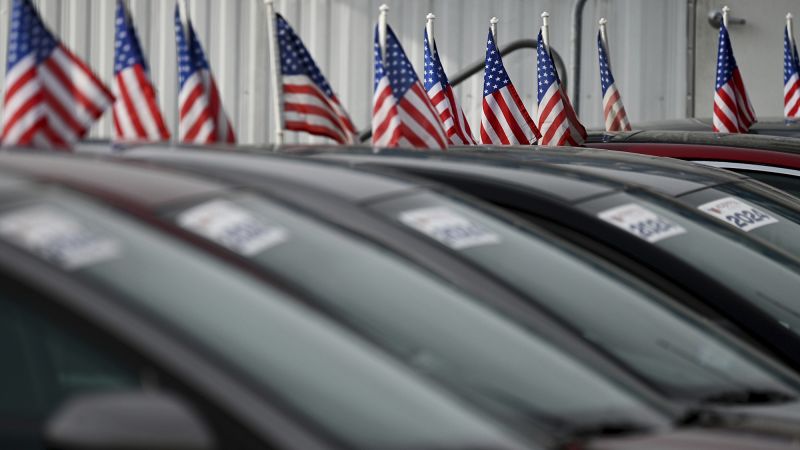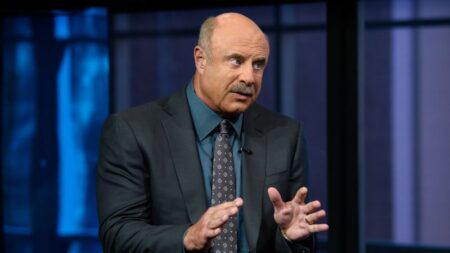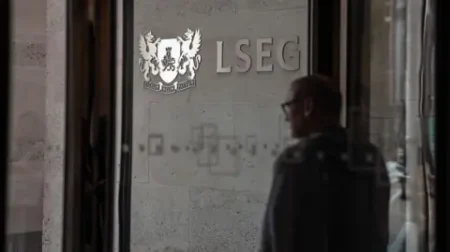The recent economic climate in the United States has been shaped significantly by the tumultuous trade policies under President Donald Trump, particularly the trade war that ignited concerns over potential price hikes on everyday goods. An illustrative case is that of Linda Wilburn, a 62-year-old retiree from Susanville, California. Although Wilburn hadn’t initially planned to purchase a vehicle this year, the escalating tensions over trade compelled her to buy a car in April. Facing the fear of impending tariffs and rising costs, she made what she described as a necessary investment due to her son’s medical appointments. Now, her monthly car payment of $607 is a substantial deduction from her only income source—her $1,600 Social Security check. Wilburn’s situation serves as a microcosm of the broader economic struggles faced by many Americans during this period of uncertainty.
As Americans grew increasingly wary of future price increases, a spending spree took hold in the spring months. Households across the nation hurried to make significant purchases—cars, electronics, and furniture—before anticipated hikes affected the costs. Despite the initial surge in consumer spending, encouraging car sales and pushing retail figures up temporarily, this trend did not last. Data from the U.S. Commerce Department revealed a decline in retail sales, with a notable 0.9% drop in expenditure during May—the steepest decrease in two years. Many consumers, like Wilburn, found themselves grappling with new debt acquired during this anxious buying frenzy, which may adversely affect future spending behavior, a critical driver of the U.S. economy.
The ramifications of this spending spree extend beyond temporary financial strain, as household debt has reached a staggering $18.2 trillion, a record high according to Federal Reserve Bank of New York statistics. For families like Wilburn’s, this trend reflects a gamble taken amidst widespread uncertainty, resulting in a precarious financial balancing act that may require years of stringent budgeting to navigate effectively. Wilburn expressed a common concern among many: the strain of prioritizing necessities over discretionary enjoyment, such as purchasing bird food for their backyard.
Discretionary spending—expenses for non-essential items—has become a focal point of concern for economists. As debt burdens grow, many Americans might prioritize saving over spending, impacting sectors like travel, dining, and entertainment. For instance, a Bankrate survey found that 54% of U.S. adults plan to reduce discretionary spending, indicating a broader cultural shift towards frugality.
This sentiment was echoed by individuals like Annika Wheelock, a 28-year-old nurse, who, alongside her family, accelerated their spending to $137,000 by utilizing loans and home equity. With their financial stability now compromised, they face an anxious financial landscape. The cumulative impact of such spending changes might culminate in reduced economic activity, further exacerbating the economic challenges posed by the tariffs.
The trade policies initiated by Trump are anticipated to lead to higher inflationary pressures, making life even more difficult for consumers who engaged in the spending spree. This scenario emerges poignantly through the story of Henry Tuason, a 52-year-old photographer from Los Angeles, who made his own significant purchases to dodge the perceived tariff impacts, leaving him on edge about possible financial hardships. The burden of newly acquired debt, alongside the heightened anxiety about job security and potential economic instability, highlights vulnerabilities among American families navigating this challenging economic climate.
While the employment rate has remained low at approximately 4.2%, some indicators, such as the slowdown in entry-level hiring, could signify underlying economic fragilities. Policymakers and Wall Street analysts are watching the situation closely, as fluctuations in consumer spending could have a significant ripple effect throughout the economy. Economic experts like Jay Bryson from Wells Fargo underline the anticipated consequences as tariffs take effect—foretold increases in prices could diminish purchasing power, leading to a noticeable decline in consumer spending.
In conclusion, the interconnected effects of trade wars and financial decisions made by consumers amidst fears of rising costs present a complex narrative of economic anxiety. From retirees struggling to meet expenses to younger families reassessing their spending habits, the consequences of these economic strategies will resonate across households and within the broader economic framework for years to come.











